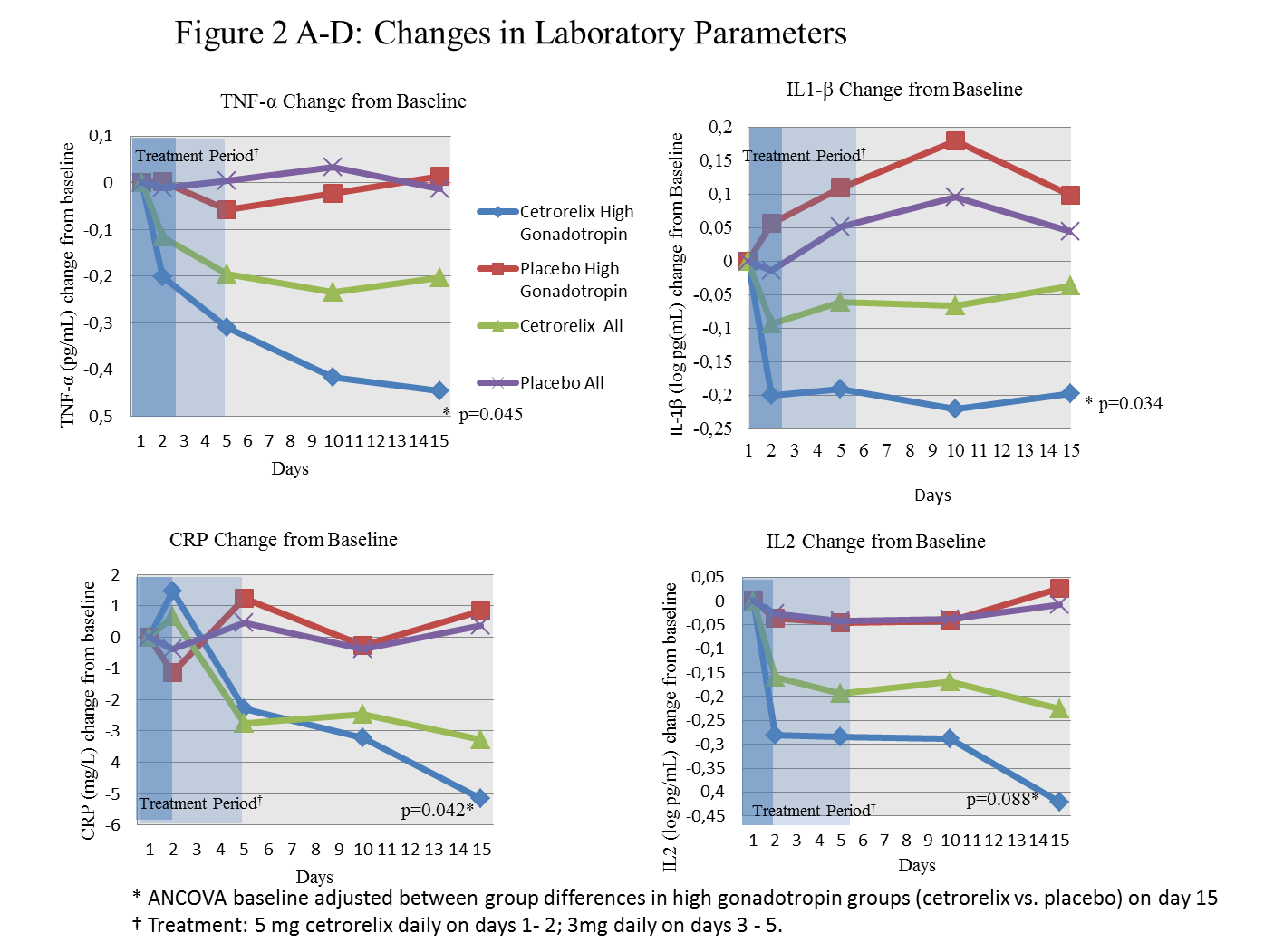Session Information
Session Type: Late-Breaking Abstracts
Background/Purpose:
The pathogenesis of rheumatoid arthritis (RA) is unclear, and treatment options can be improved. Gonadotropin-releasing hormone (GnRH) stimulates immune responses (1). Inhibiting GnRH, by cetrorelix, has shown anti-inflammatory effects in RA. GnRH antagonists primarily lower the gonadotropins, luteinizing hormone and follicle-stimulating hormone. Therefore, in this study, we wanted to assess the effects of a GnRH antagonist in RA patients who had the highest baseline gonadotropin levels i.e. who experienced the largest gonadotropin reductions.
Methods:
Predefined endpoints from our proof-of-concept, randomized, double-blind, single-site Norwegian AGRA study (N=99, ITT population) with active longstanding RA have been reported earlier (ClinicalTrials.gov NCT00667758). Patients were randomized using computer-generated allocation (1:1) in dynamic blocks stratified for sex. Patients were assigned to cetrorelix s.c (5mg days 1-2, 3mg days 3-5) or corresponding volumes of placebo. Herein we report ITT post hoc assessments among patients with high gonadotropin levels ( i.e levels>median, N=27 Cetrorelix, N=26 Placebo). Only our predefined primary and secondary endpoints were used in these analyses. Linear regression assessed between group differences for continuous endpoints adjusting for baseline values (ANCOVA). Dichotomous endpoints were compared with the Pearson chi-squared test.
Results:
The original primary endpoint, DAS28CRP was significantly reduced in the cetrorelix group (-1.0) compared to placebo (0.4) by day 5 (p=0.010). Significantly more patients achieved ACR20, DASCRP≤3.2, and DAS28CRP<2.6 in the cetrorelix group vs. placebo (Figure 1). CRP (p=0.042), TNF-α (p=0.045) and IL1-β (p=0.034) were significantly reduced compared to placebo by day 15 (Figure 2). Baseline demographics were similar between the cetrorelix and placebo groups. Patients were older and almost all female in the high gonadotropin groups (98% F; mean age 59yr) vs. whole AGRA population (72% F; mean age 55yr). The incidence of adverse events was similar between groups.
Conclusion:
The data suggest that inhibiting GnRH in RA patients with high gonadotropin levels, such as postmenopausal females, has rapid anti-inflammatory effects. GnRH antagonism might represent a novel mode of action for TNF-α inhibition in RA, and potentially other autoimmune diseases.
Reference:
Disclosure:
A. Kåss,
None;
I. Hollan,
None;
P. Torjesen,
None;
H. C. Gulseth,
None;
T. Førre,
None.
« Back to 2013 ACR/ARHP Annual Meeting
ACR Meeting Abstracts - https://acrabstracts.org/abstract/cetrorelix-a-gonadotropin-releasing-hormone-antagonist-demonstrates-efficacy-and-significantly-reduces-proinflammatory-cytokines-in-patients-with-active-longstanding-rheumatoid-arthritis-w/


